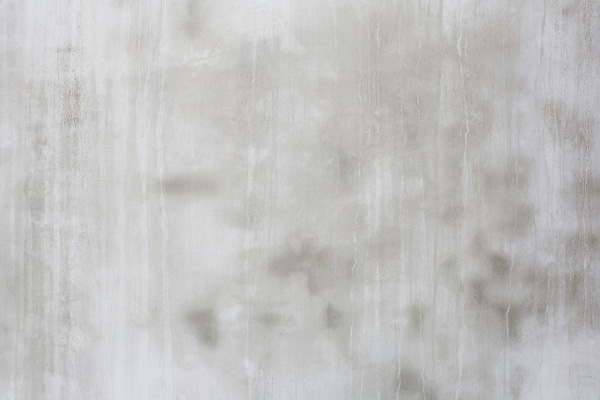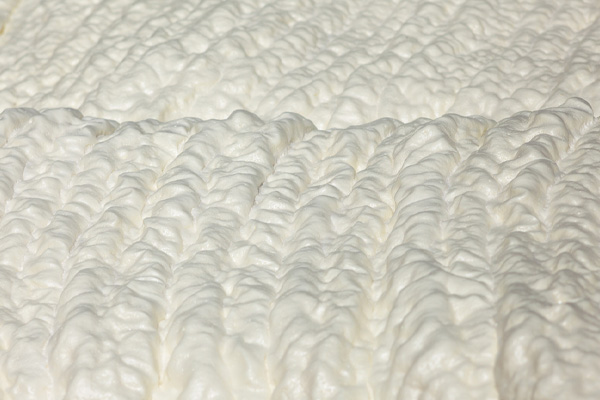Does Spray Foam Insulation Absorb Water?

Does spray foam absorb water? This is a concern many homeowners have, especially when dealing with unexpected flooding. Heavy rain can cause roof leaks that create a mess in the attic or lead to standing water in crawl spaces. Beyond the immediate stress, water intrusion often brings costly repairs, structural damage, and insulation issues.
Materials like cellulose and fiberglass are especially vulnerable because they trap moisture. Once wet, they can take a long time to dry out, creating the perfect conditions for mold to grow. That not only harms your home’s value but can also affect your family’s health.
Spray foam insulation behaves differently. Although its porous structure might suggest it would hold water, it actually allows moisture to pass through and evaporate. Once dry, the insulation retains its strength and performance, making it a more reliable option in wet conditions.
At Ascend Construction, we aim to clear up common misconceptions about insulation so homeowners can make confident, informed decisions. In this article, we’ll explain how spray foam responds to water exposure, why it’s often compared to concrete, and what that means for your home’s protection.
Upgrade Your Comfort And Efficiency: Keep energy bills low and your home protected year-round with Ascend Construction’s professional insulation solutions. Call now!
Does Spray Foam Trap Moisture?
Contents
A common misconception is that spray foam insulation traps water because of its porous structure. In reality, whether it absorbs or sheds moisture depends on the specific type of foam. Some lower-grade products may hold a small amount of water, but high-quality open-cell spray foam is engineered to allow moisture to move through and evaporate.
This distinction is important because traditional insulation materials act like sponges, absorbing and retaining water for extended periods. Once wet, they become heavy, lose their insulating power, and often need replacement. Spray foam, by contrast, dries out naturally and maintains both its structure and performance. For homeowners, this means fewer long-term problems and greater peace of mind after a leak or flood.
Concrete & Spray Foam: A Comparison

Concrete provides a helpful way to understand how spray foam responds to water. After a storm, you may notice concrete walls darken as they soak up rainwater. Concrete is porous, so water seeps into microscopic air pockets, yet it doesn’t stay there permanently. Once the weather clears and the air begins to circulate, the moisture slowly escapes, and the concrete dries out completely.
Open-cell spray foam behaves in much the same way. Its porous structure allows water to pass in and out without causing damage. This temporary wetness is not a sign of failure but a natural process. Like concrete, the material retains its strength and returns to its original state once dry.
For homeowners, this means spray foam offers resilience under wet conditions while still delivering the air-sealing benefits it was designed for.
Build A Healthier, More Resilient Home: Ascend Construction delivers expert insulation that improves air quality, resists mold, and saves energy. Contact us today!
How Long Does the Drying Period Last?
One of the biggest advantages of spray foam is that it does not remain saturated like other insulation materials. However, the drying time can vary widely depending on the situation. Small leaks may dry out in just a day or two, while major flooding could extend the process to a week or longer. Foam that has been fully submerged in standing water will naturally require additional time.
Several factors influence this timeline:
- Volume of water exposure: A minor leak in the roof will dry far faster than a basement flood.
- Air movement: Proper ventilation accelerates evaporation, while stagnant areas slow the process.
- Indoor conditions: Warm, dry air promotes faster drying than cool, humid environments.
Patience is key. Even when the process takes longer, the foam will regain its dry state and continue performing effectively once moisture evaporates.
An Example Of How Spray Foam Dries

Imagine a Fort Collins home flooded during heavy rainfall, where spray foam insulation in the walls becomes saturated. In one room, the foam is left to dry naturally, relying only on ambient air circulation. In another, a small fan increases airflow across the surface. In a third, a fan is strategically placed to pull moisture directly away from the foam.
The differences are clear:
- Passive drying is slowest but still effective.
- Increased air circulation speeds up evaporation.
- Direct airflow delivers the fastest results.
What’s most important is the outcome: despite being completely soaked, the spray foam in all three scenarios retains its shape, adhesion, and insulating power. Once dry, it performs as though nothing ever happened.
Don’t Let Poor Insulation Cost You More: Ascend Construction offers professional insulation services that prevent energy loss and water damage. Schedule a visit today!
How Airflow, Materials & Spray Foam Affect Drying Times
Airflow is only part of the equation. The condition of surrounding materials can significantly affect how quickly spray foam dries. For example, if the foam is attached to damp wood framing, the water in the wood may take longer to evaporate, delaying the overall drying process. Similarly, if drywall or flooring remains saturated, nearby foam will stay wetter for longer.
Despite these challenges, open-cell spray foam has a key advantage: it resists mold and mildew. Even with moisture present, fungi cannot take root on the foam itself. The insulation also won’t sag, compress, or lose its bond to the surface. It maintains its structural integrity and air-sealing ability until it fully dries. In most cases, replacement is unnecessary unless the building itself sustains severe structural damage.
How to Deal with Residential Moisture Issues
While you can’t control the weather, you can reduce the risks of water damage with proper preparation. Start by addressing vulnerabilities such as roof leaks, clogged gutters, or poorly sealed crawl spaces. Preventive maintenance can minimize water intrusion before storms hit.
For homeowners seeking long-term peace of mind, spray foam insulation provides a valuable safeguard. Its ability to dry out without losing performance makes it especially well-suited for areas prone to heavy rain or seasonal flooding. Partnering with experts like Ascend Construction ensures that the foam is properly installed, maximizing both its protective qualities and energy-saving benefits.
Experience The Power Of Expert Installation: With Ascend Construction’s spray foam insulation, you get comfort, efficiency, and moisture resistance in one solution. Call today!
When to Call an Expert Insulation Service

While spray foam offers excellent protection against moisture, its performance depends on the quality of the product and how it is installed. Homeowners should call an expert insulation service if they are planning a new installation, dealing with recurring leaks, or recovering from flood damage. A professional can assess the condition of your home, identify potential problem areas, and recommend the best insulation strategy for long-term durability.
At Ascend Construction, we use high-quality open-cell spray foam designed to resist moisture retention while maintaining energy efficiency. By working with experts, you not only gain peace of mind that your insulation is properly applied but also ensure your home is better prepared to handle future storms, leaks, and seasonal changes.
Be Ready For Any Season Or Storm: Ascend Construction provides insulation services that keep your home secure, efficient, and comfortable year-round. Book your appointment now!
FAQs About Spray Foam Insulation and Moisture

Can Spray Foam Insulation Prevent Mold Growth?
Yes, spray foam insulation does not hold moisture long enough to create a breeding ground for mold. Its porous structure allows water to pass through and eventually evaporate. Mold typically needs sustained dampness to thrive, which spray foam does not provide, making it a safer option for moisture-prone areas.
Is Spray Foam Insulation Suitable for Flood-Prone Homes?
Spray foam is often considered a strong choice for homes in flood-prone areas. Even if submerged, it maintains its structure and continues providing an air seal once dry. While the drying time can vary, homeowners don’t usually need to replace it unless the house sustains severe structural damage during the flood.
Does Spray Foam Insulation Work Well in Cold, Damp Climates?
Yes. In colder, damper regions, spray foam provides the dual benefit of thermal insulation and moisture management. Its ability to block drafts while shedding water helps keep homes warmer and drier. Unlike other insulation types, spray foam resists sagging or compressing over time, even when exposed to seasonal moisture cycles.
Insulation That Works As Hard As You Do: Choose Ascend Construction for expert installation and lasting comfort. Call today!
Can Spray Foam Be Installed Over Damp Surfaces?
Spray foam should never be applied over damp or wet materials. Proper preparation is crucial to ensure adhesion and performance. If applied over moisture-laden surfaces like wet wood, the foam may trap water behind it and prolong drying, which could affect surrounding materials. Always allow substrates to dry thoroughly before installation.
Does Spray Foam Improve Indoor Air Quality After a Flood?
Yes, it can contribute to better air quality compared to traditional insulation. Since spray foam does not harbor mold or mildew, it helps reduce the release of spores and allergens into the air. Homeowners recovering from water damage often find that spray foam minimizes lingering odors and maintains a healthier indoor environment.
Conclusion
So, does spray foam absorb water? The truth is that high-quality open-cell spray foam does not hold onto moisture the way traditional insulation materials do. Instead, it allows water to pass through and evaporate, preserving its structure and performance even after significant exposure.
For homeowners, this means fewer replacements, reduced mold risk, and greater peace of mind when facing storms or unexpected leaks. By choosing expert installation, you can ensure your insulation not only improves comfort but also safeguards your home against future water damage.
Comfort You Can Feel, Savings You Can See: Trust Ascend Construction for insulation solutions that make a difference. Schedule your appointment today!
Ascend Construction: Fort Collins’ Insulation & Energy Efficiency Specialists
The right insulation partner can make all the difference in your home’s comfort and energy performance. With so many options available, you need a trusted team that delivers reliable results every time.
Ascend Construction provides expert insulation installation and removal, air sealing, whole-house fan installations, energy audits, and tailored energy-saving solutions. Our skilled professionals combine technical expertise with a homeowner-first approach to boost comfort, efficiency, and long-term value.
Rely on Ascend Construction for honest recommendations, detailed craftsmanship, and solutions designed to last. Reach out today and take the first step toward a more comfortable, efficient, and future-ready home.

Contact Ascend Construction for an appointment today. We can provide you with practical solutions to address the problem areas in your Fort Collins home. All of our services are affordable, and our work is guaranteed. Click here to contact us, or click the button below to give Ascend Construction a call. We offer no-obligation in-home consultations.
Ascend Construction
4115 County Road 19
Fort Collins, CO, 80524
(970) 420-5495
Related Articles:
- 9 Existing Home Insulation Problems That Rear Their Ugly Face In The Colorado Winter
- Fort Collins Basement Insulation Problems: 5 Things That Can Cause You Troubles
- How To Insulate A Wall Without Removing The Drywall
- The Role of Insulation in Home Resale Value: What Fort Collins, CO Buyers Look For
- How Often Should Insulation Be Reevaluated in Older Homes?